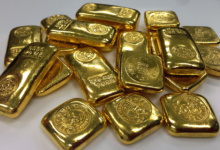Diversification is important when it comes to investing in precious metals, as it lowers your risk. But you should also know the tax implications of owning bullion. You can learn about the tax consequences of owning precious metals by reading this article.
When it comes to choosing individual stocks, remember that it is a difficult industry to finance. Many of these companies are global in nature, which can make the choice of individual stocks difficult. If you are considering saving in these types of stocks, you should know that 90% of investors underperform the precious metals stock index.
Also, find out about the different types of investments you can make, from mining stocks to precious metals-backed exchange-traded funds. These are good choices for your savings portfolio. In this article, you will learn how to save and avoid common mistakes.
1. Diversification Reduces Risk
A good portfolio consists of various assets based on an investor’s preferences. It is designed to provide maximum returns while minimizing risks. Portfolio diversification is a requirement of the modern investor. According to most capital experts, it is best to spread capital across a number of asset classes, rather than investing exclusively in one theme or sector.
While diversification reduces overall risk, over-diversification can lead to an overly risky portfolio.
In addition to limiting the amount of money an investor allocates to precious metals, diversification also protects against market volatility. Gold doesn’t rely on the US dollar for its value, so a falling stock market does not automatically translate into a decrease in its price.
Gold, on the other hand, keeps its value against all currencies. Hence, it is a good hedge against currency volatility and sharp inflation making it great for transferring over from your traditional 401(k) plan. If you want to learn more about a gold 401k, you can follow the previous link. Otherwise, continue on with the tax basics.
However, it is important to remember that investing in precious metals is an investment. It is not advisable to put all of your savings into a single asset, as it could rapidly lose value. Instead, it is best to save a small percentage of your portfolio on various types of assets. By doing so, you can counteract the decrease in value by spreading your money across many types of assets.
2. Tax Consequences
If you’re a new trader, you may be surprised to learn about the tax implications of owning an investment. With apps like Robinhood and Webull, making trades is simple. However, it can be confusing to know how to report your earnings from trading stocks, crypto tokens, and precious metals. Not all trading apps include tax implications.
One way to avoid paying higher taxes on your capital is to save in an ETF. These ETFs are taxed at a rate of 28%, unlike stocks. In addition, physical precious metals is subject to a higher tax rate of 28% if you sell it after a year. That said, holding your investments for at least a year may reduce the tax burden. In some cases, you may be able to avoid paying taxes at all if you choose to hold on to them for longer than a year.
You can also make precious metals investments through a brokerage account, Roth IRA, gold mining corporation stocks, and exchange-traded notes. Investment gains from stocks and mutual funds are taxed as long-term capital gains.
The benefits of a precious metals individual account are generally greater than the returns from a brokerage account or an ETF. Furthermore, you’re more likely to make a profit on it if you buy futures ETFs or buy coins.
3. Investing in Mining Stocks
Investing in mining stocks may be an excellent way to profit from a rising price of the metal, but it should be noted that these companies are not necessarily closely related to prices. While prices may rise, that doesn’t guarantee that mining stocks will, either. In addition, mining operations can be volatile due to changing input costs and regulatory structures. Thus, it’s best to understand the mining business and its operations before investing in it.
This is because mining is a complex industry that can become flooded with fraud. Therefore, it’s important to carefully research each individual stock and make sure that it’s a reliable, safe individual account.
If you want to trade in precious metals, you should use futures instead of buying or selling the actual metal. Futures are contracts that represent predetermined amounts of precious metals. Unlike traditional equity investments, they are a safe investment option for experienced investors. In addition, futures carry low commission fees and margin requirements.
Moreover, some gold mining stocks are traded in dollars, while others are traded in precious metals. Depending on the specific contract, you should know the margin requirements and transaction costs before investing.
4. Investing in Gold-Backed Exchange-Traded Funds
While bullion prices remain attractive, investors may want to think twice before investing in these exchange-traded funds. Global bullion ETFs have experienced a recent outflow, totaling US$3.1 billion. This represents the largest monthly outflow since March 2021. Overall, gold ETF holdings are still 8% higher than they were at the start of the year. However, investors should be wary of short-term gains in bullion funds.
First, investors should be aware that bullion is collectible and therefore may be subject to tax implications. To learn more about ETFs, click this link to be brought to the Wikipedia page with more information. As a result, they should discuss the details of gold ETFs with a tax advisor. Another thing to consider is the total cost of owning a gold ETF.
The lowest-cost physical gold ETF is the best choice for an investor who is serious about bullion. Ben Johnson, director of global ETF research at Morningstar, suggests buying products backed by physical bullion through an IRA. This way, they are able to defer taxation until retirement.
Another benefit of investing in bullion-backed exchange-traded funds is the fact that income earned on these investments is tax-free. Gold funds generally hold the stuff they purchase in their vaults, allowing them to be used as collateral for loans.



